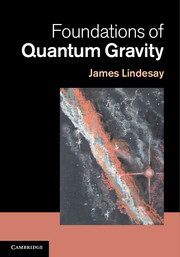Book contents
- Frontmatter
- Contents
- Preface
- Notations and Conventions
- Introduction
- Part I Galilean and special relativity
- Part II General relativity
- 5 Fundamentals of general relativity
- 6 Quantum mechanics in curved space-time backgrounds
- 7 The physics of horizons and trapping regions
- 8 Cosmology
- 9 Gravitation of interacting systems
- Appendix A Addendum for Chapter 1
- Appendix B Addendum for Chapter 2
- Appendix C Addendum for Chapter 3
- Appendix D Addendum for Chapter 4
- Appendix E Addendum for Chapter 5
- Appendix F Addendum for Chapter 7
- Appendix G Addendum for Chapter 8
- References
- Index
7 - The physics of horizons and trapping regions
from Part II - General relativity
Published online by Cambridge University Press: 05 July 2013
- Frontmatter
- Contents
- Preface
- Notations and Conventions
- Introduction
- Part I Galilean and special relativity
- Part II General relativity
- 5 Fundamentals of general relativity
- 6 Quantum mechanics in curved space-time backgrounds
- 7 The physics of horizons and trapping regions
- 8 Cosmology
- 9 Gravitation of interacting systems
- Appendix A Addendum for Chapter 1
- Appendix B Addendum for Chapter 2
- Appendix C Addendum for Chapter 3
- Appendix D Addendum for Chapter 4
- Appendix E Addendum for Chapter 5
- Appendix F Addendum for Chapter 7
- Appendix G Addendum for Chapter 8
- References
- Index
Summary
One of the principles of modern physics that is most adhered to is the expectation that models constructed to describe the phenomena of the physical universe should not depend upon any absolute frame of reference. The discovery of the CMB radiation perhaps demonstrates a counter example to this supposition, due to the preferred frame at rest relative to the energy content of the universe during its initial phase of expansion, as will be discussed in the next chapter. However, for most phenomena, the co-variance of the laws modeling those phenomena is consistent with the expectation of independence of the fundamental physics from the particular frame of reference utilized by the observer. This principle is embodied in the concept of complementarity [23] in the description of black holes. In its most direct expression, complementarity simply states that no observer should ever witness a violation of a law of nature. In particular, one expects that for a freely falling observer, there should be no local effects of gravitation as espoused by the principles of equivalence and relativity.
In this treatment, a horizon will always be a light-like surface that globally separates causally disconnected regions of space-time. Since light itself is characterized by both classical and quantum properties, geometries with horizons offer insights into the subtle relationships between general relativity and quantum physics. Generally, horizons can be only globally (not locally) defined, which means that local experiments performed by freely falling, inertial observers cannot detect the presence of such horizons.
- Type
- Chapter
- Information
- Foundations of Quantum Gravity , pp. 267 - 308Publisher: Cambridge University PressPrint publication year: 2013

